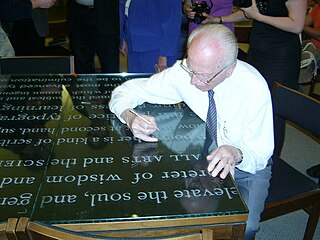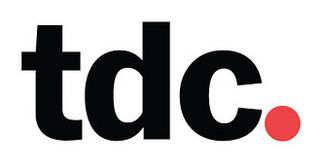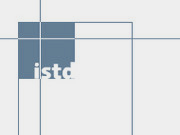
Typography is the art and technique of arranging type to make written language legible, readable and appealing when displayed. The arrangement of type involves selecting typefaces, point sizes, line lengths, line-spacing (leading), and letter-spacing (tracking), as well as adjusting the space between pairs of letters (kerning). The term typography is also applied to the style, arrangement, and appearance of the letters, numbers, and symbols created by the process. Type design is a closely related craft, sometimes considered part of typography; most typographers do not design typefaces, and some type designers do not consider themselves typographers. Typography also may be used as an ornamental and decorative device, unrelated to the communication of information.

Hermann Zapf was a German type designer and calligrapher who lived in Darmstadt, Germany. He was married to the calligrapher and typeface designer Gudrun Zapf-von Hesse. Typefaces he designed include Palatino, Optima, and Zapfino.

The Type Directors Club (TDC) is an international organization to promote excellence in typography, both in print and on-screen. It was founded in 1946.
The ATypI or Association Typographique Internationale is an international non-profit organisation dedicated to typography and type design. The primary activity of the association is an annual fall conference, held in a different global city each year.
Roy Cole was a type designer. His introduction to type began at the age of fourteen with an apprenticeship in the composing room of a printers in Idle, Bradford. This was followed by several years working as a journeyman compositor in the UK and in Switzerland. In 1960 he attended the typography course at the Allgemeine Gewerbeschule Basel, in Switzerland, under Emil Ruder’s tutelage. In 1961 he married Maria Zenz from Austria, who he had met in Basel. There followed several years working as a salaried typographer, both at home and overseas, and he also served as an assessor for the Society of Typographic Designers’ student assessments in the late 1970s–early 1980s. In 1981 he became a freelance book designer for, amongst others, Philip Wilson Publishers, the Ashmolean Museum and the Bodleian Library. Then, in 1990, he was invited as foreign guest juror for Stiftung Buchkunst's Best German book design competition. In 2003 he formed Roy Cole typography, a type foundry based in Wells, England, dedicated to exploring and developing type families in the sans serif style.
Emil Ruder was a Swiss typographer and graphic designer, who with Armin Hofmann joined the faculty of the Schule für Gestaltung Basel.
In design, New Wave or Swiss Punk Typography refers to an approach to typography that defies strict grid-based arrangement conventions. Characteristics include inconsistent letterspacing, varying typeweights within single words and type set at non-right angles.

Peter Biľak is a Slovak graphic and typeface designer, based in The Hague, The Netherlands. He works in the field of editorial, graphic, and type design; teaches typeface design at the postgraduate course Type&Media at the KABK, Royal Academy of Art. He started Typotheque in 1999, Dot Dot Dot in 2000, Indian Type Foundry in 2009, Works That Work magazine in 2012, and Fontstand in 2015. He is a member of AGI, and lectures on his work internationally. He is a writer for numerous design magazines and frequently contributes writing and design to books and publications that include Print, Emigre, Eye (magazine), Items, tipoGrafica, Idea (magazine), Abitare and, Page.
Stephen Banham is an Australian typographer, type designer, writer, lecturer and founder of Letterbox, a typographic studio.

Philippe Apeloig is a French graphic designer and typographer born in Paris in 1962.

Wolfgang Weingart was an internationally known graphic designer and typographer. His work was categorized as Swiss typography and he was credited as "the father" of New Wave or Swiss Punk typography.
Henry Steiner is an Austrian graphic designer, best known for his corporate identity designs. He has created designs for some of the most identifiable brands, such as IBM, Hyatt Regency, Hilton Hotels, Dow Jones, HSBC, Standard Chartered, Unilever, and was commissioned to design the city's bank notes by the Hong Kong government in 1975. Steiner was educated at the Sorbonne and at Yale. In 1964, he founded his own consultancy firm, Steiner&Co, in Hong Kong.

Martin Majoor is a Dutch type designer and graphic designer. As of 2006, he had worked since 1997 in both Arnhem, Netherlands, and Warsaw, Poland.
Astrid Stavro is an Italian graphic designer based in London.
Vincent Steer was a compositor noted for founding the British Typographers' Guild and for his book on typography, which was known as the "Typographer's Bible".
The Frederic W. Goudy Award & Lecture were established in 1969 by funds donated to Rochester Institute of Technology (RIT) by the Mary Flagler Cary Charitable Trust in memory of her late husband, Melbert B. Cary, Jr., a typographer, type importer, fine printer, book collector, and president of AIGA. The award was named after illustrious American type designer Frederic W. Goudy, a friend and business associate of Melbert Cary.

Alan Kitching RDI AGI Hon FRCA, is a practitioner of letterpress typographic design and printmaking. Kitching exhibits and lectures across the globe, and is known for his expressive use of wood and metal letterforms in commissions and limited-edition prints.

Adi Stern is an Israeli graphic designer, type designer, and the President of the Bezalel Academy of Arts and Design in Jerusalem.
Jost Hochuli is a Swiss graphic designer known for his book designs. He is also the author of Detail in Typography, which has been translated into several languages.

Hans Peter Schmoller was a German and British graphic designer who worked as Head of Typography and Design at Penguin Books from 1949 to 1976. During his Penguin years he played a crucial role in postwar British typography, and has been described as one of the most influential typographers of the last century.










